|
The roof is an essential part of a home and other buildings. A roof offers structural support and shelter to the entire building. It saves the house from the external environment and climatic conditions. Moreover, a roof contributes to the energy efficiency of a house if the right material or paint is selected. Roofs often form a large part of the exterior of your house and it may have a big visual impact. As discussed in the previous article, Tips for selecting exterior paint colours for your home, roofs can impact and compliment your exterior paint choices and they should fit the style and architecture of the house. There a variety of types and materials used for the construction of roofs. Homeowners need to choose the right material for protecting and maintaining the energy efficiency of their homes. They need to consider the environmental and climatic factors while choosing the best type of roof for their house. Every type of roof has its pros and cons that homeowners should consider before installing it for their home. Let us explore the various types of roofs with their pros and cons. Asphalt shingle roofsMost of the roofs in America are made of asphalt shingles, and they comprise almost 80 percent of the housing market. Installed on sloped roofs, they offer good protection from external weather and environment. Pros Asphalt shingles offer good wind resistance and protection from fires. They are inexpensive compared to other materials and moderate in weight. They protect your home from snow as it slides down the slope to the ground. Asphalt shingles are suitable for a variety of sloped roofs. Cons They are less durable and less environment friendly than some other roof choices. The life of asphalt shingles is shorter than other types of roofing materials. They need maintenance after a few years of installation, especially in regions that experience harsh weather. Moreover, asphalt is prone to algae, so homes in humid locations need algae resistant shingles. Metal roofsMetal roofs come in various materials such as steel, copper and tin. They are durable and have a long life. Pros Metal roofs are lighter than asphalt and other materials. Therefore, they don't put much weight on the walls and the structure of a house. You can install them on the flat (depending on the type or profile of the metal) as well as sloped roofs. As they come in standard metal sheets, it is easy to install them with the help of professionals. Metal roofs absorb less heat (despite becoming hot in the sun) compared to asphalt and other materials. They offer good protection from the external environment and the harsh weather. They are resistant to fires and heat and protect the interiors from damage. Cons They can be expensive, as in the case of copper roofs. Moreover, metal roofs are prone to corrosion. Homeowners need to primer and coat them with anti-corrosion paints to protect them from damage. Copper can turn green with time, and homeowners may find it unappealing and unattractive. Metal roofs also make a lot of noise in heavy rain and hailstorms. They are prone to dents if heavy object fall on them and they require professional help for repairs. Because they are light, they must be securely fastened to the roof structure, which in turn must be securely fasted to the house structure, so that the roof is not blown off in severe winds. Wood shingle roofsWood shingles are another good option for the construction of roofs. They are aesthetically attractive and can complement almost any type of home decor. Pros Wood shingles create a natural look and add charm and character to any house. Moreover, they are environment friendly and recyclable after years of use. Wooden shingles are best to use in the locations that experience warm and pleasant weather, and the temperatures stay in the mid-range. Cons Wooden shingles have a low fire resistance unless the manufacturers treat them for protection from fires. The lifespan of wooden shingles is short, and they require more maintenance than other materials. They are not suitable for locations experiencing harsh weather conditions such as summer temperatures above 40 degrees and heavy rains or snow in winters. Concrete roofsMost of the flat roofs are made of concrete, which is a thick mixture of cement, sand, stone, and water. Pros Concrete roofs have the longest life, and they also offer the best resistance to fire and harsh weather conditions. The roofs can be made in any shape and design, but most people prefer flat roofs as they are easy to construct. Concrete roofs can last up to 50 years or more depending on the quality of material used in construction and the climatic conditions of the location. Cons The weight of the concrete roof is more than any other material available. Moreover, it is prone to leakages, especially in the locations that receive heavy snow and rains so additional waterproofing layers may have to be added - especially on flat concrete roofs. Sloped roofs like asphalt and metal roofs are more suitable for such locations. Clay Roof TilesClay tiles are another popular option for house roofs. They are heavier than most other materials. Pros A roof made with clay tiles keeps the roof cool and improves the energy efficiency of homes. Moreover, they can provide an Italian or Spanish appearance to your house. These tiles are natural and environment friendly. Even after using the tiles, users can dispose of them carefully without any harm to the atmosphere. Cons They are sometimes more expensive compared to other materials and are prone to damage in harsh storms. They require a strong support structure. They can only be fixed to sloping roofs. In conclusionsThese are some of the most common types of roof covering materials used for homes. Homeowners should consider the climatic conditions in their location, the style of their house, the exterior colour scheme, the available roof materials in the region, the shape and structure of the roof, costs and their requirements before choosing a material for their roofs. You could even choose a green roof. Read our article: 5 Benefits of a Green Roofing System You can also hire a house roof painting service to paint your roof and enhance its kerb appeal and prolong the roof's life. Please like and share Author Bio: Emily Bartels is a content writer at Brisbane Roof And Paint. She enjoys writing on various topics mainly associated with Home Improvement, Gardening, Technology and Gadgets. Her famous articles are on the topic of Home Improvement , Technology and many more. Learn more about renovating and building houses?Paul Netscher has written 2 easy to read books 'An Introduction to Building and Renovating Houses - Volumes 1 and 2'. An Introduction to Building and Renovating Houses Volume 1 deals with Hiring Contractors, Managing Construction and Finishing Your Home. and Designing your ideal home Volume 2 deals with Finding Your Ideal Property and Designing Your Dream Home.
("Great for those that DIY. Very helpful in home renovations!" said a Reader on Amazon.com 5*****) These books are available from Amazon and other online bookstores in paper and ebook.
42 Comments
The exterior paint of any house is a part of its kerb appeal. It is important to choose the exterior paint carefully as it enhances the kerb appeal as well as the energy efficiency of your house. Some homeowners prefer light and bright colours, while others choose dark colours for their home. However, both light and dark colours have their own pros and cons and are suitable according to the location and requirements of homeowners. It is necessary to do some research before choosing a paint colour for your home. Let us check some tips to choose the right exterior paint colour for your house. Consider the elements you cannot change on the exterior of your homeUnless you choose to do an entire renovation, elements like tiles, stone pavements, pathways, and roof shingles remain in their place. Therefore, it is essential to consider these things while selecting a colour for your exterior walls. Look for undertones between these elements to choose a colour. Consider choosing a colour of paint that can tie them all in a harmonious way. Paint finish of the exterior of a buildingIn addition to choosing the right paint colour, you also need to consider the paint finish. Homeowners don’t benefit by using high gloss paints for exterior walls, even though they have the highest durability. On the other hand, satin and eggshell finish paints are the most suitable for external walls. Satin and eggshell paints are durable and easy to clean when required. Moreover, satin and eggshell finishes can enhance the kerb appeal of your house. Light and Dark ColoursThe colour of paint on the roof and exterior walls affects the energy efficiency of a house. Light and bright colours reflect most of the heat and light and prevent the walls from heating up. Homeowners in hot and warm locations should choose light colours of paint for their exteriors. However, the dark colours absorb most of the light and heat approaching them and keep the surfaces warm. Homeowners living in locations with cold climate should prefer painting the exteriors with dark colours like brown, grey, red, or blue. Colour of your roofThe roof of a house is its canvas, but not a blank canvas. Some colours have already been there. All the roofing materials like shingle, metal, slate, clay, and terracotta have their own colours. You don’t need to match the colour of your exterior walls with your roof, but the paint should harmonise with the roof colour. Moreover, your stone or brick paver and driveways also influence the selection of your house colours. It is best to consider the roof colour and other elements while choosing paint for your outer walls. The paint of the house walls is easier to change than changing a roof or pathway. Colour ideas for your homeGreen and white A combination of green and white looks perfect if you want to match the colour with your front yard. If you have a green front garden, you can paint the front wall with green colour and trims and edges in white. While using the green colour, we have a variety of shades to choose from, such as pea green, or dark green and many other shades between them. You can use one which suits the best according to your outdoors and surroundings. White Farmhouse style If you like the white farmhouse style, you can use a glowing and rich white paint for your exteriors. You can choose a white colour pallet that could steer clear of dull and sterile. Moreover, if you live in a warm location, the white colour absorbs less heat and improves the energy efficiency of your home. If the front side of your house receives direct sun, it is better to paint the front wall with warm white paint as it reflects the light partially as compared to dazzling white. Timeless contrast By timeless contrast, we mean a look that never goes wrong when you have a classic styled home with plenty of trims and other details, when you increase the contrast between the trim and the field colour, you better represent the home aesthetically. For example, if you choose to paint the walls in a light and bright colour, you should paint the windows, trims and other details in dark colours. Navy Blue and white Navy blue is a dark colour that works well if you have a small home. You can paint the front wall in navy blue and trims in white. Alternatively, the reverse combination with the front wall in white and trims in blue also looks awesome. Paint the roof in chocolate brown or another dark colour to create high contrast. The combination looks best if you have a front porch. You can also use it to decorate the wooden details in front of your house. Chocolate Brown and Beige If your house has a large colonial with plenty of roof-lines and windows, then you can use dark colours like chocolate brown and ancient copper. Use a beige colour for trims and areas surrounding the windows. It is best to use a beach trim, such as deserted beach colour, to create a unique look and contrast between the house and blue sky. You can also try another combination with dark granite and chocolate brown combined with beach colour. Pea Green, White, and Grey If you have a sloped roof and a lot of windows in the house, you can use the combination of pea green and grey paint. The combination looks best if you have a grey colour of pavements or pathways in front of your house. Paint the walls in pea green and roof in grey colour, keeping the windows and trims white. The right paint job for your home will enhance its valueThese are some paint colour ideas for the exterior walls of a house. To get a high quality paint job it's best to avoid the DIY attempt and hire professional services. The key to getting a high-quality paint job is to hire professionals and choose two paint colours to create a sharp contrast. It is also important that the colours you choose should complement the external elements like the garden, driveways, and stone pavements. Author Bio: Emily Bartels is a content writer at Aqua Painting. She enjoys writing on various topics mainly associated with Home Improvement, Gardening, Technology and Gadgets. Her famous articles are on the topic of Home Improvement, Technology and many more. Please like and share Want to learn more about renovating and building houses?Paul Netscher has written 2 easy to read books 'An Introduction to Building and Renovating Houses - Volumes 1 and 2'. An Introduction to Building and Renovating Houses Volume 1 deals with Hiring Contractors, Managing Construction and Finishing Your Home. and Designing your ideal home Volume 2 deals with Finding Your Ideal Property and Designing Your Dream Home.
("Great for those that DIY. Very helpful in home renovations!" said a Reader on Amazon.com 5*****) Use your idle time if you are quarantined at home or your holiday is cancelledThousands of people are being sent home for 14 says of self isolation because of coronavirus or covid-19. Even more have suddenly had their holiday plans thrown into disarray due to flight cancellations, or because they decided not to travel because of the risks. What will you do if you expectantly have to spend time at home? For many this time can be frustrating, and they'll fret about the situation. It's easy to become depressed, even get upset with the rest of the family, who are probably in a similar situation. But some of us will revel in the luxury of having an enforced time away from work. A chance to spend time with our family. Time to catch up on some of the things we have been meaning to do, but were too busy to get around to. So here are a few tips to make use of your time away from work. Home improvement ideas
Of course be careful not to tackle projects that are too large for you, or that you don't have the skills for. You don't want to return to work leaving an unfinished project at home which you might not be able to complete for months and months. Plan your next home renovation, or new house constructionThinking about renovating or remodelling your home? Maybe you want to build a new house? Well why not spend the time searching the internet for ideas. Decorating ideas. Architectural concepts. Design ideas. Types of tap-ware, toilets, baths, light fittings, floor finishes, door and cupboard handles, kitchen appliances, tiles, and more. File items you like into a review folder. Read home renovation books or house design and construction books for tips and ideas. (My books 'An Introduction to Building and Renovating Houses'. Volume 1 deals with hiring contractors, managing contractors and finishing your home. Volume 2 will help select your property and design your dream home. Both books contain valuable advice for home makeovers and renovations.) Take the time to review your finances to see how much you can spend. Prepare a budget. Discuss ideas with your partner. Do rough sketch layouts of what you're thinking. If you are going to employ contractors start investigating them by visiting their websites. List questions you should ask prospective contractors. You could even make contact with some builders. If they're sitting at home they will be more than willing to help you out with some rough price estimates. When the country returns to normal you will have lots of information available so you can get your new project going. Don’t waste your quarantine time by:
Importantly don’t break your quarantine. Don’t put others at risk if you’re infected. Don’t risk catching the virus from others, which could extend your quarantine further. Conclusion - use your time wiselyWe’re usually all flat-out busy at work most of the year, with barely time to think about ourselves or our families. If you’re forced to stay out of work for a few weeks then make the most of the opportunity. Spend time with the family. Fix your house up. Do stuff you’ve been meaning to do for years. Enjoy your break. Before you know it you’ll be back at work with little time for yourself or your family. What will you do with your time when you’re quarantined? Are you currently in lock-down – what are you doing with your time? For further information on getting your workplace ready for the virus read this advice from the World Health Organisation. For information on self isolation visit Please like and share. Want to learn more about renovating and building houses? Click on this picture to read more Click on this picture to read more Paul Netscher has written 2 easy to read books 'An Introduction to Building and Renovating Houses - Volumes 1 and 2'. An Introduction to Building and Renovating Houses Volume 1 deals with Hiring Contractors, Managing Construction and Finishing Your Home. and Designing your ideal home Volume 2 deals with Finding Your Ideal Property and Designing Your Dream Home. ("Great for those that DIY. Very helpful in home renovations!" said a Reader on Amazon.com 5*****) Case study: I know somebody who purchased a house for $1.5 million. It’s a two bedroom house, has a narrow dark staircase and two very small bathrooms that can’t even fit a bathtub. The kitchen is small. Generally there isn’t much to like about the house. However, he and his wife redid the bathrooms and kitchen, made other changes including redoing the floors, repainting and decking the internal courtyard, probably spending in excess of $150,000. He got divorced, remarried and he and the new wife continued to live in the house. Now despite there being three bedroom houses with two big bathrooms across the road on sale for $1.2 million, and four bedroom, three bathroom houses a few doors away for $1.5 million they probably spent another $150,000 redoing the bathrooms and kitchen, increasing the size of the balcony, altering windows, adding cupboards, changing window coverings, etc. After all this expense they still have a house that has two bedrooms, two small bathrooms, a narrow dark staircase and which is probably worth less than $1.2 million! What a waste of money. Now, as I’ve suggested there was an alternative to purchase a bigger house in the same neighbourhood. But, clever innovation and with a spend of $200,000 they could easily have added a third bedroom, which would have been a very generous master bedroom with a third bathroom (big enough for a proper bathtub and a shower) and a large balcony. Suddenly their $1.2 million house could have become a much nicer house to live in that would have been valued at over $1.4 million. But really the problem with the house is it has ‘bad bones’. It’s poorly designed and has many features, including the staircase and bathrooms, which are very difficult to change. Spending any money on the house is really throwing good money after bad. Ask these questions before embarking on a renovationIt’s important to assess whether the changes, renovations and remodelling your house will be money worth spending by asking these questions:
Want to learn more about renovating and building houses?Paul Netscher has written 2 easy to read books 'An Introduction to Building and Renovating Houses - Volumes 1 and 2'. An Introduction to Building and Renovating Houses Volume 1 deals with Hiring Contractors, Managing Construction and Finishing Your Home. and Designing your ideal home Volume 2 deals with Finding Your Ideal Property and Designing Your Dream Home.
("Great for those that DIY. Very helpful in home renovations!" said a Reader on Amazon.com 5*****) |
AuthorI’m a construction professional, author of several successful construction management books, and a home owner. I’ve made mistakes in construction management, I’ve seen others make mistakes, but importantly I’ve had multiple successful construction projects and I’ve learned from the mistakes. I want to share these lessons and my knowledge with you. Also available from:
Amazon Au, Amazon DE, Amazon ES, Amazon CA, Amazon IT, Amazon FR, Amazon NL, Amazon India and 'An Introduction to Building Houses - Volume 2 Finding Your Ideal Property and Designing Your Dream Home'
Archives
July 2024
CategoriesWe welcome genuine comments, especially comments that add additional information to the subject matter in the article. We however reserve the right to remove inappropriate comments, which includes comments that have nothing to do with the subject, comments that include inappropriate language, and comments that are an advertisement for a product or company, or which include an advertising link. Comments must be in English. We will not enter into discussion on why a particular comment was removed.
|
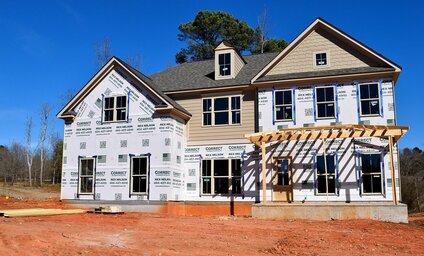
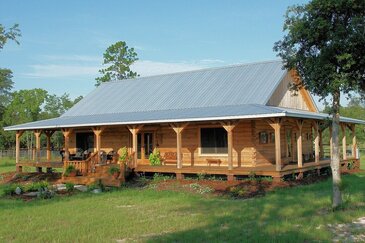
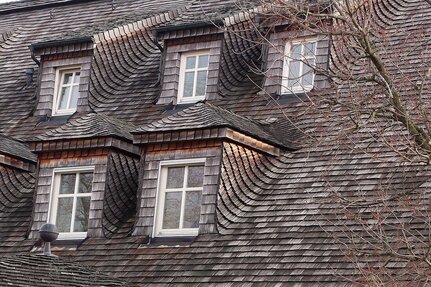
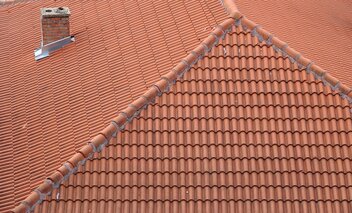


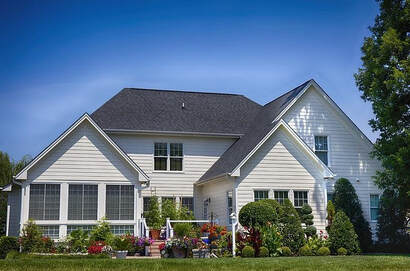
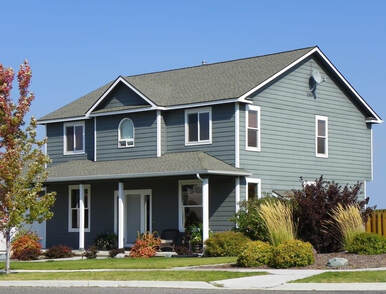











 RSS Feed
RSS Feed


